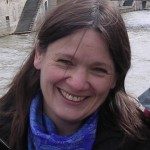Link to Pubmed [PMID] – 20537944
Link to DOI – 10.1016/j.ijmm.2010.04.016
Int J Med Microbiol 2010 Nov; 300(7): 470-81
Legionella pneumophila, the causative agent of Legionnaires’ disease, is known to be an intracellular pathogen of multiple species of protozoa and is assumed to have co-evolved with these organisms for millions of years. Genome sequencing of L. pneumophila strains has revealed an abundance of eukaryotic-like proteins (ELPs). Here, we study the evolution of these ELPs, in order to investigate their origin. Thirty-four new ELPs were identified, based on a higher similarity to eukaryotic proteins than to bacterial ones. Phylogenetic analyses demonstrated that both lateral gene transfer from eukaryotic hosts and bacterial genes that became eukaryotic-like by gradual adaptation to the intracellular milieu or gene fragment acquisition, contributed to the existing repertoire of ELPs, which comprise over 3% of the putative proteome of L. pneumophila strains. A PCR survey of 72 L. pneumophila strains showed that most ELPs were conserved in nearly all of these strains, indicating that they are likely to play important roles in this species. Genes of different evolutionary origin have distinct patterns of selection, as reflected by their ratio of a synonymous vs. synonymous mutations. One ELP is common to several strains of Legionella, but outside this genus has homologs only in Acanthamoeba polyphaga mimivirus, indicating that gene exchange involving eukaryotic viruses and intracellular bacterial pathogens may also contribute to the evolution of virulence in either or both of these groups of organisms. Information on selection patterns and eukaryotic-like status was combined as a novel approach to predict type IV secretion system effectors of Legionella, which represent promising targets for future study.


